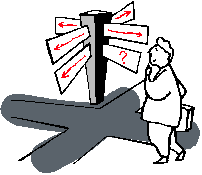|








| |
-
Do-it-yourself house and garden maintenance and improvement is one of
the most common ways of using free time.
-
Home decorating, improving
the quality of interior fittings like kitchens and bathrooms, adding
extensions and the like are all jobs that can be tackled in this
way.
-
Some jobs, particularly plumbing and electrical work, require
special knowledge and skills and they can be dangerous if you don't know
what you are doing.
-
Reasons for doing DIY
include the pleasure of using and developing practical skills, and the
satisfaction of getting the job done, as well as the more practical
issue of saving money.
|
|
Ask the Builder www.askthebuilder.com/
(a USA site)
bright beige - the home for style online www.brightbeige.co.uk/
diyfixit www.diyfixit.co.uk/
homesbydesign www.homesbydesign.co.uk/800/1-log.asp
|
Changing Rooms
Practical Householder
Real Homes & Self Build
You can also look at many of the general home and garden magazines.
|
-
Find a local DIY group (see organisations above).
-
Take a class or course at your local
adult education centre or DIY store.
-
Consult books or magazines
on different types of DIY.
-
Check in your local library/paper
or DIY store for more information.
|
Skills and people
-
People of all ages and both sexes can tackle
basic DIY and can learn the skills needed to do the more complicated jobs.
-
Most people do DIY either on their own or in co-operation with family
or friends. A big job is often much more easily tackled with some
others to help and advise you.
-
Some people go to classes in order to
improve their skills and gain confidence, as well as for the social
contact.
Equipment or clothing
-
Each DIY job to be done requires particular materials and tools.
Much DIY time is taken up by deciding on the precise nature and amount of
material and tools needed.
-
General tools, like saws, drills, hammers
and screwdrivers, are needed for many jobs. They may be manual or
powered.
-
A manual of some kind is
desirable for the more complicated work.
A place or facilities
-
By definition, DIY is generally done in the home, either your own or a
friend's.
-
But some people extend their activities to working on the
local community hall or school.
-
Classes will generally have access
to some kind of specially equipped workshop.
|
|
